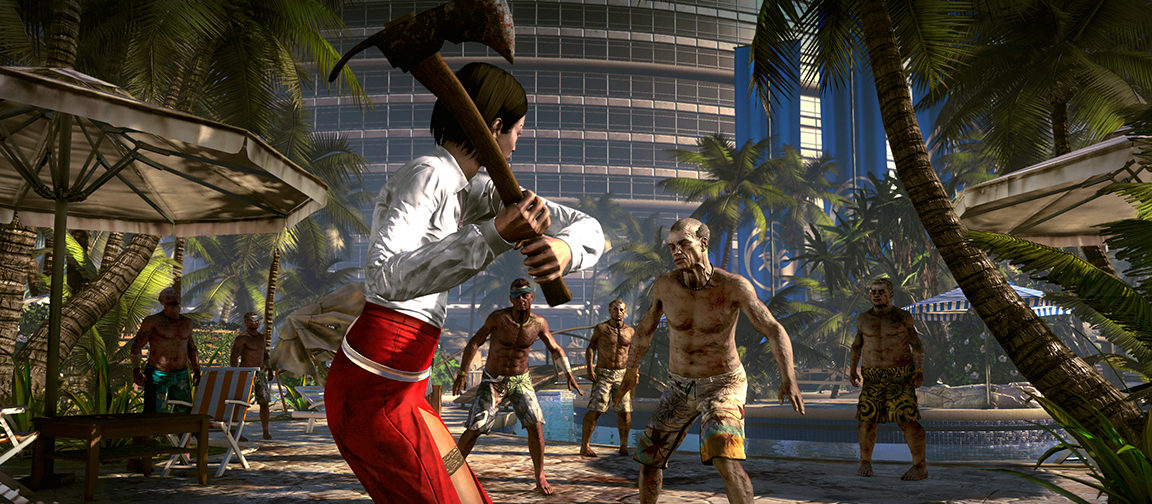
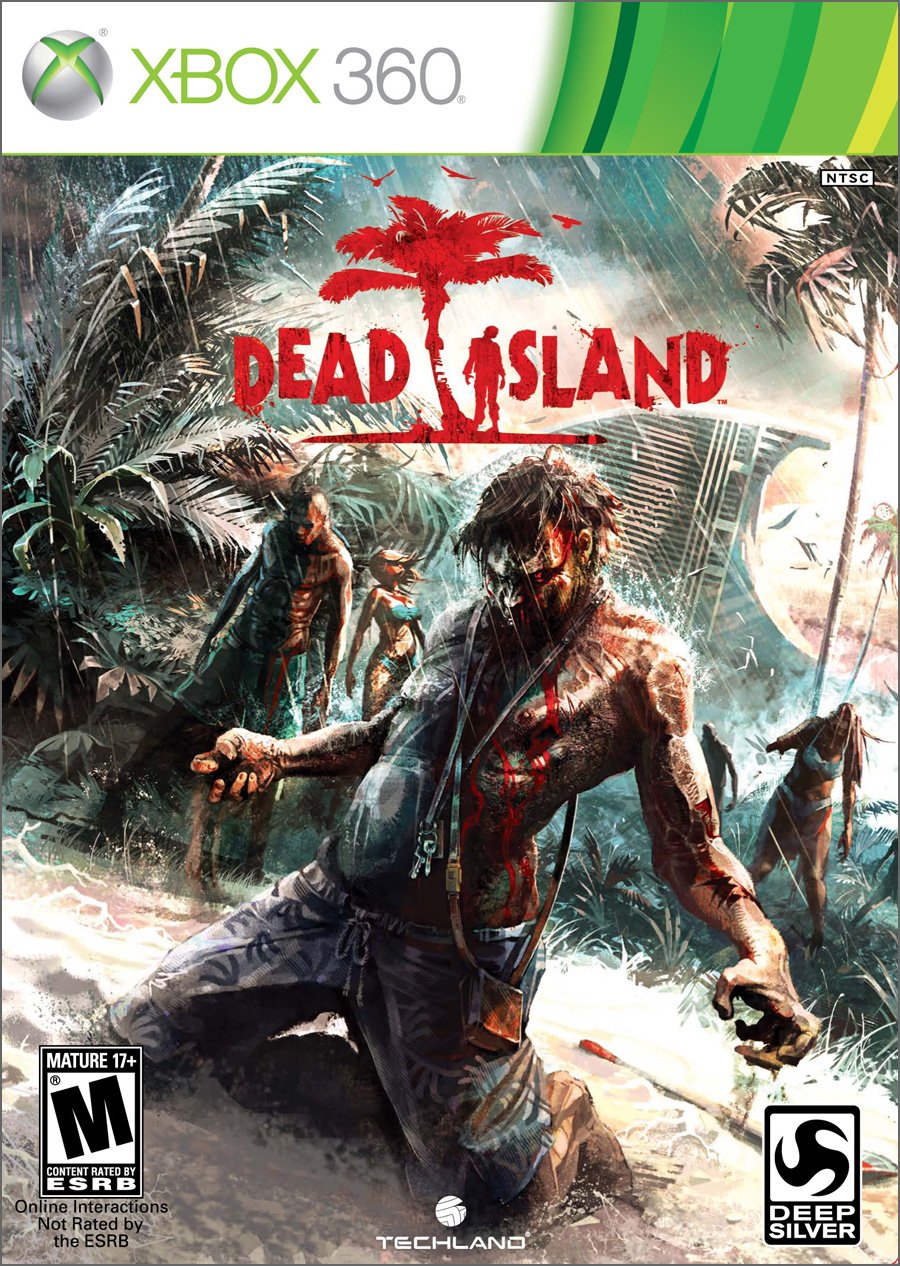
“Bloody hell, I need a bath.”
I vividly recall the first time I saw the announcement trailer for Dead Island. Devoid of gameplay, set to somber strings and piano and depicted in reverse slow motion, it’s more than an ad—it’s a stunning short film in its own right. Its three minutes are brutal, haunting and evocative, yet somehow elegant. Riddled with frenetic snippets of flashback, we witness a zombie child being thrown from an upper story window of a tropical resort by her father, who has just rescued her from a horde of relentless infected. The combination of technical prowess and emotional resonance captured in such a small window of time is astounding and—dare I say it—might even rival some of Pixar’s greatest short-form achievements. It generated so much positive feedback that it won an award at the advertisement version of Cannes.
As the aughts came to a close, Polish developer Techland had a diverse but largely obscure track record to its name. The Call of Juarez series was its biggest calling card. The catalog was rounded out by a hodge-podge of obscure PC games that no one remembers. But they were poised to really establish themselves with Dead Island. The trailer earned them some major street cred and potential fans were buzzing about the intriguing combo of a gorgeous paradise setting, zombie gore, and evocative storytelling. Unfortunately, where the trailer was a singular piece of animated filmmaking, the game is easily lost in the shuffle of survival-horror games. That’s not to say it is without merit. It is sufficiently violent and the setting (at least initially) is a major selling point. But in the one area where the trailer all but promised us that Dead Island would have a leg up on other horror titles—namely, a story with some real emotional heft—it is a huge letdown. Nevertheless it made enough of a mark that they went onto produce the popular Dying Light and a once-canceled sequel to Dead Island is apparently in the works.
From a storytelling angle, Dead Island tries to position itself somewhere in the realm of Bioshock and the modern Fallout games but falls woefully short. Initially there is some promise to it. After an all-night party, you’re sleeping off a beast of a hangover when a voice blasts through the hotel’s intercom system and implores you to evacuate. As anyone who has taken the time to boot up the game can easily predict, there has been a viral outbreak that has turned the bulk of the island’s residents and visitors into savages with an appetite for flesh. But you are immune, as are three others.1 You can still be torn limb from limb and die but bites won’t infect you. It quickly becomes evident that the resort was not built to function for long without external provision and the player finds themselves running all sorts of dangerous errands to help meet the needs of other survivors.
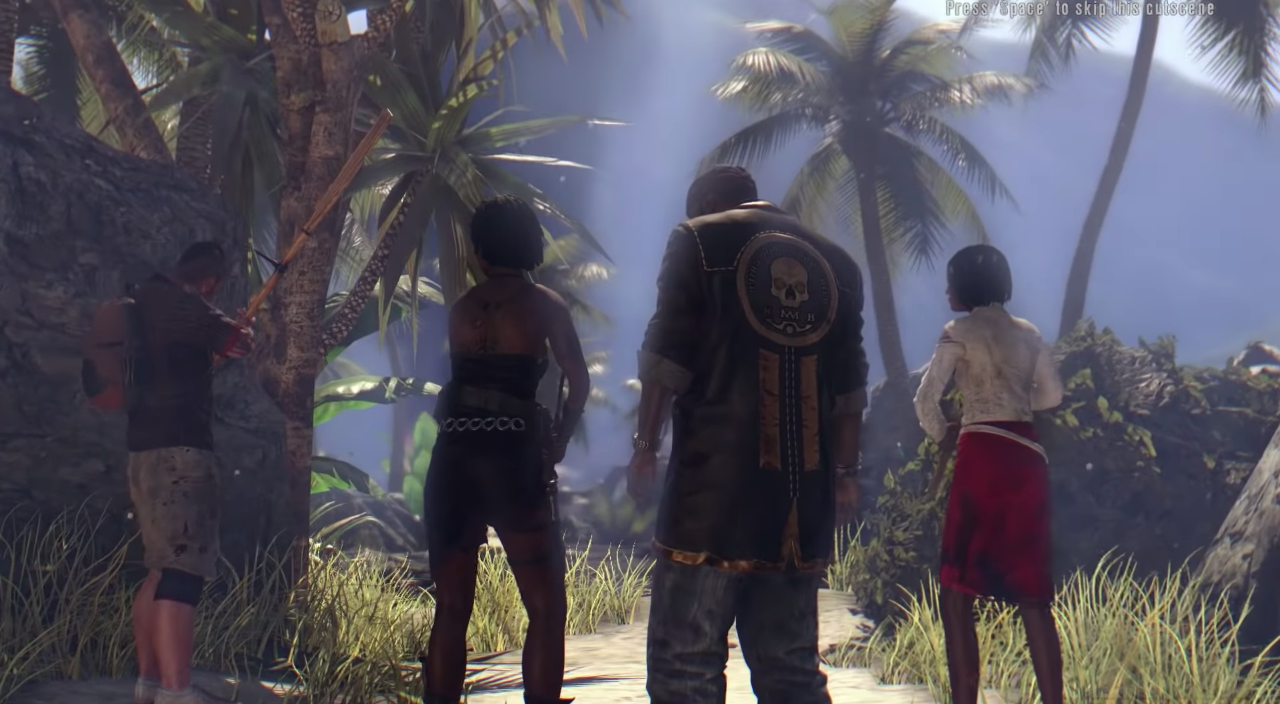
The overarching narrative turns hokey pretty quickly. There’s no inherent fault in this and it’s actually quite enjoyable for what it is, but it clearly doesn’t meet the expectations set by that wonderful trailer. As you move further along the main storyline the setting expands from the crystal blue water, sandy beaches and straw bungalows of the resort to include the island’s capital city, a police station, the sewer system, and a jungle region. Aside from the frustrating sewers, the game eschews the regular shadows and gloomy settings typical of horror for the plush resort, the tropical jungle, and the sunbaked remnants of the abandoned capital. The narrative scope widens as well to include survivor gangs with evil motives, primitive tribes, a smuggler, and a high security prison on a nearby island that may have an operational helicopter on the premises. Oh, and there’s a villain who wants to nuke the entire island.
Video game narratives are almost uniformly second rate. Rare exceptions are good enough that they could work as novels and some have the conceptual fundamentals to work as films, but most of them would be utterly forgettable if you weren’t immersed in the story by playing it. That is to say it’s okay that Dead Island has a mediocre story that doesn’t resonate. That’s par for the course. But it also does a poor job of conveying that lackluster story—that’s a problem. Like any RPG, the game world is fleshed out by countless conversations with NPCs. In Dead Island, these are weighed down by stiff, apathetic dialogue and lack of substance. It seems like most of these characters are only minorly inconvenienced by the outbreak of the kuru mutation. You’ll come across a survivor trapped in a convenience store by a horde of zombies; you rescue him and he’ll be like, “Thanks, man. I thought I was a goner. I owe you one. Hey, if you’re ever moseying around near my apartment, can you retrieve my favorite pair of socks? I’ll give you 600 XP and a baseball bat.” (I made this up.) This is where games like those aforementioned excel. They have fun little diversions that can only be experienced by trodding off the beaten path. Here, as you stray further from the main quests, there is an evident lack of effort put into the material. One saving grace, however minor, is that the various audio recordings scattered about the map (another element lifted from Bioshock) are degrees of magnitude more effective than the dialogue.
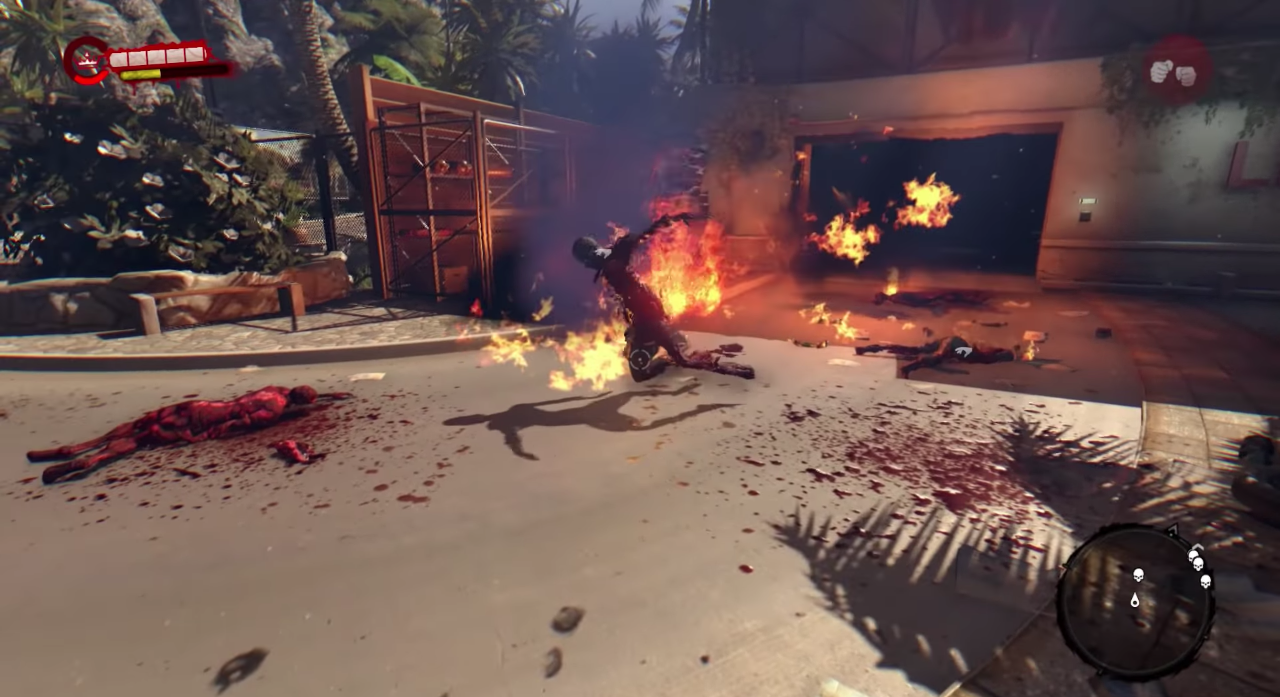
But to reiterate my point from above: you’re playing a game instead of reading a book or watching a movie or whatever because you want to have some degree of control. So what if the dialogue is lacking or the story is goofy—how does it feel to lop the heads off of zombies with a cleaver or crush their bones with a homemade mace? I must say that the combat has a satisfying tactility to it. As firearms and ammunition are few and far between in the early going you’ll find yourself cycling through an array of melee weapons that wear out quickly and must be repaired frequently ensuring that a diverse selection is utilized. All of the weapons are randomly generated à la Borderlands and can be found on downed enemies, loot boxes, or as quest rewards. They can also be upgraded with effects like fire and electricity as various modification schematics and required components are collected. I gravitated toward one-handed blades but there’s a fairly wide selection to choose from. The gunplay, once it comes along, is less effective (although thankfully less prominent) and I never really felt in-sync with it during the sporadic encounters with non-infected enemies.
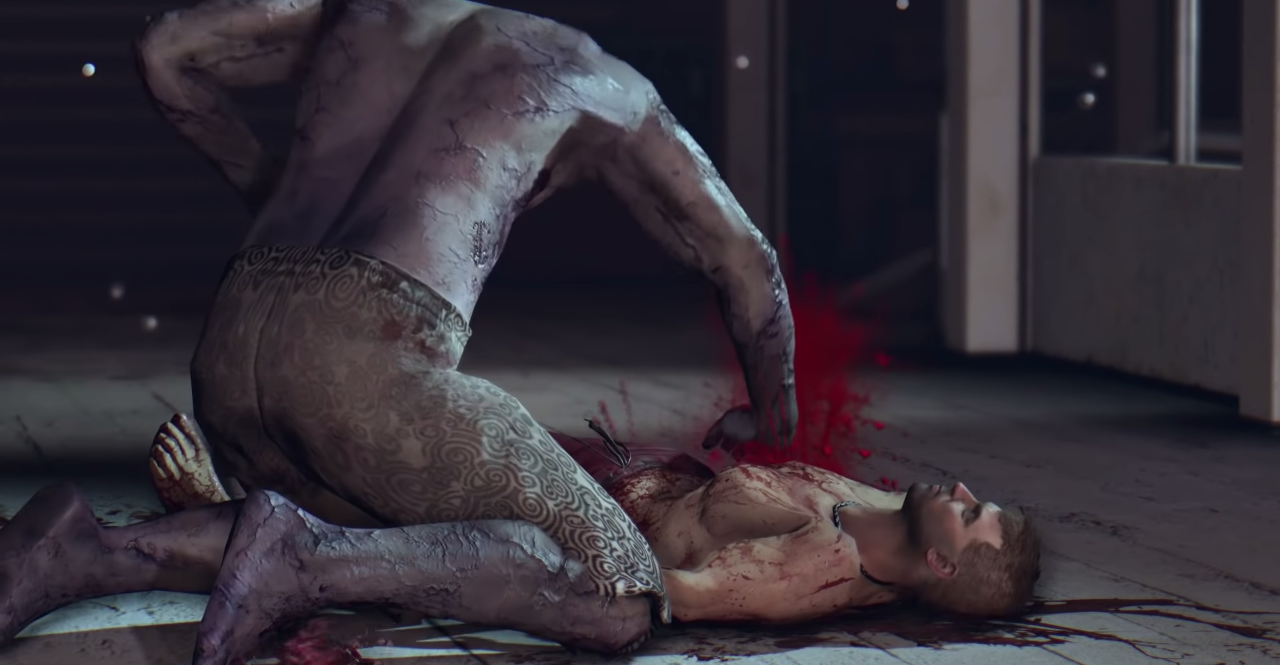
But all too often the immersive fun of the combat is interrupted by questionable game design. Sometimes a mace to the face will momentarily stun a zombie, other times it will knock it to the ground. But still others—and in my opinion this happened far too frequently—your attacks will have no visible effect at all. They will do damage, as indicated by the floating HP number, but the enemy will continue the onslaught unfazed, ducking within punching range and giving you a beating. (And the enemy AI is fairly solid; once they detect your presence they’ll come at you in a mob.) Then add onto this that the hit detection box is annoyingly small for melee combat (like, dude, I’m raking a machete diagonally across the thing’s torso, what do you mean I missed over its shoulder?). Then add onto this that you’re often in these situations when you’re not even trying to complete a quest. Then add onto this that the stamina required to perform melee attacks depletes and is shared with the stamina required to run—even though that run is barely more than a jog? One little wrinkle that I found delightful was the ability to throw your melee weapons, though I most often employed it when taking on “thugs”—annoying brutes that will not die until you’ve hurled approximately thirty weapons at their chest. It’s quite hilarious when they finally topple and you stand over their corpse for a whole minute picking up all of the weapons lodged firmly in their sternum.
What it all amounts to is a decent game that doesn’t live up to the titles from which it steals. It pulls the general action RPG template from the Fallout series, the loot and levelling systems from Borderlands, the weapon crafting from Dead Rising 2, the setting from Just Cause 2 and the early Far Cry games, the storytelling of Bioshock, and the zombie hordes of Left 4 Dead. But in every case the implementation in Dead Island is just meeting the minimum threshold. It has its own style with its melee emphasis and a janky charm that will give it some staying power but it’s hard not to view it as an inferior title and one that failed to live up to its potential. Maybe I would have liked it more if it weren’t for that dang trailer.
1. The game can be played with up to three online co-op partners. I played solo.